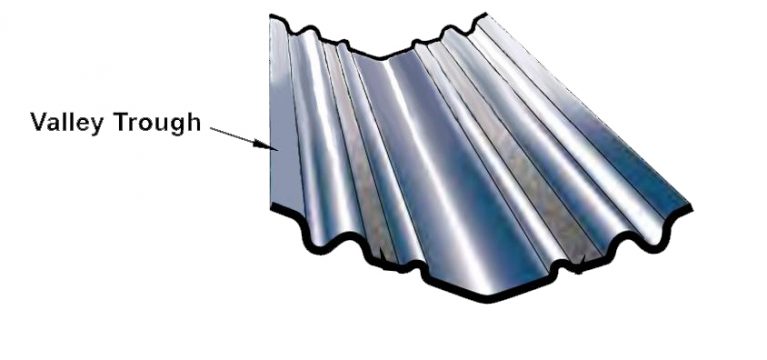What is a Roof Valley Trough?

A roof valley trough is created at the intersection point of two sloping roofs and is a key component within the overall quality and durability of a roofs’ structure. Located mainly on primary areas of the roof, roof valleys are also required to surround other plane breakages such as dormers or chimneys. Installed in order to prevent water pooling by creating runaway paths for water to flow away and off the roof, it is an integral part of maintaining the longevity of roofing structures.
Read our full guide on roof valley troughs to find out more about the importance of roof valley troughs and what roof valley troughs are available.
What is the importance of a Roof Valley Trough?
The sole purpose of roof valley troughs is to create pathways for water (typically rainfall) to easily drain away and off of the roof. Without these all-important valley troughs in roofing structures, water may potential pool in areas where intersections meet or in any structural breaks in the planes of the roof.
This water pooling can be detrimental to the overall condition of the roof and lead to problems, including the possibility of compromising the structure entirely. Examples of the potential issues caused by water pooling include deterioration of roofing materials, stress on structures due to the added weight, freeze-thaw related damage in colder climates and creating build-ups of debris, moss and algae.
What are Roof Valley Troughs made from?
Traditionally manufactured from lead, modern roof valley troughs are now more commonly manufactured from Glass Reinforced Polyester (GRP). This is due to them being more cost-effective to produce whilst also being more durable and having a longer lifespan thanks to their UV protective coating on surfaces.
GRP valley troughs are also much more versatile, compatible with all different types of roofing materials and available in both wet and dry fixing options. Also easier to install and handle thanks to being lighter and easy to cut than the lead alternatives, roofers tend to favour the convenience of GRP options.
When in use, the UV protective film is also highly resistant to fungus or mould; requiring less regular maintenance in order to keep the valley clear, reducing the likelihood of dirt build-ups or blockages.
How do Roof Valley Troughs fit in roofs?
Depending on the material used for the roof, for example, tile or slates, roof valley troughs are installed in different ways to ensure full waterproofing on each side of the valley to prevent any water from accessing underneath the tiles. Below we have included detailed diagrams of the positioning of roof valley troughs for both tiled and slated roofs.







